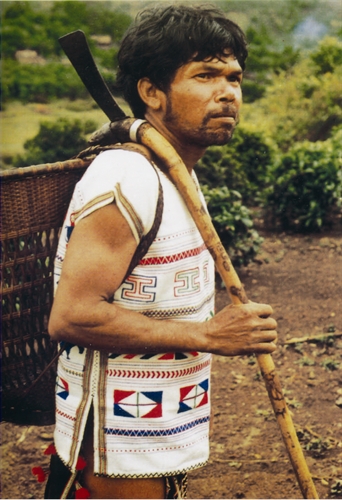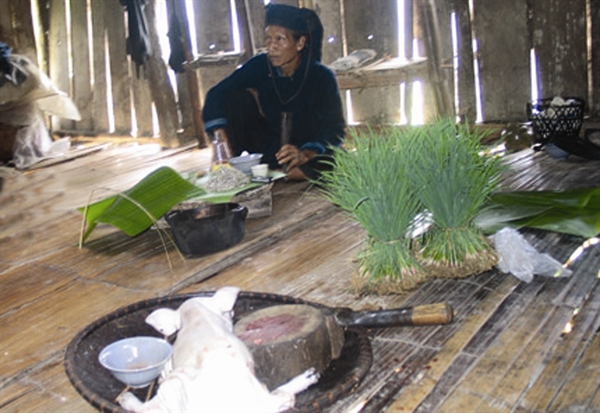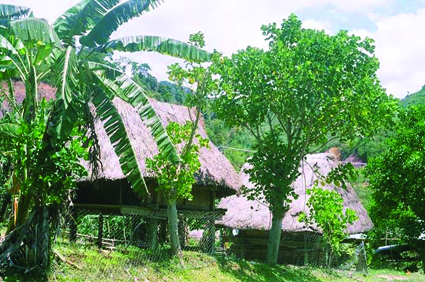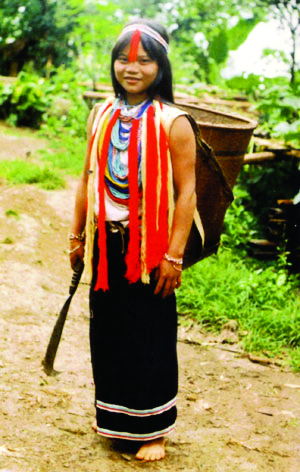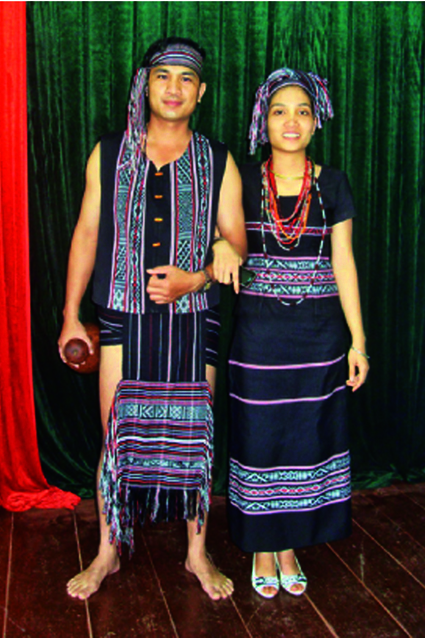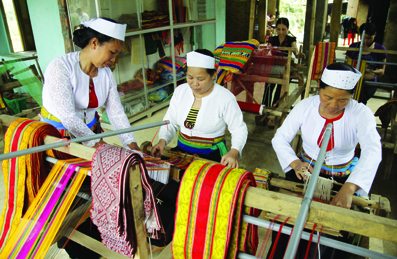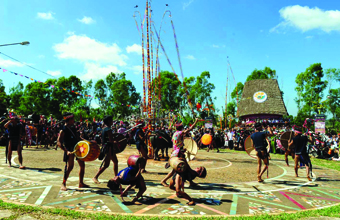>>La Hu wedding
>>“La Hu” ethnos — Its customs and practices
>>The La Hu in North Vietnam
Ta Thi Tam
Ethnology Institute
Khu te cha (pray for rain) is the most important festival of the La Hu in Muong Te district, Lai Chau province.
As its name means, khu te cha aims to pray for rain and good harvest when the rainy season starts in this northern mountainous province. The festival is held in the sixth lunar month on a date of the pig as for the La Hu pigs symbolize prosperity.
Before holding the festival, villagers meet to select the ritual conductor who must be an elderly man conversant with La Hu customs. This man is also supposed to come from a well-off and happy family whose prosperity and happiness are believed to spread to other families.
To prepare for the festival, villagers contribute rice, meat, wine and money and send their members to make offerings for the ceremony and a feast for the whole village.
An important preparation is to make du lang (swing), du quay (ferris wheel), bap benh quay (rotating seesaw) and bap benh (seesaw) as folk games are an indispensable part of the festival.
Du lang is a swing hung from a frame made of four bamboo trees around nine meters high. The swing hanger is a bamboo beam around six meters long and twenty centimeters wide. The swing ropes are made of rattan while the seat, which is 50-60 centimeters above the ground, is a wooden plank nearly one meter long and fifteen centimeters wide.
Du quay is a small wooden ferris wheel usually made for only four or six players. The wheel consists of three logs each around three meters high used as the vertical posts and the horizontal axle and eight or twelve bars of wood as pokes of the wheel (depending on the number of players). The pokes are fixed to the axle through the holes made on the axle, nailed and then tied with liana. The rim is made of rattan strings tightly tied to the points at one end of the pokes.
Bap benh quay is a semicircular seesaw made from two logs, one around two meters long as the pivot point and the other about six meters long as the arm which is carved into a semicircular shape. The pivot log is buried in the ground half a meter deep with stones put around it. The arm of the seesaw is placed onto the pivot point through a hole made in the middle of the arm which must be larger than the diameter of the pivot point so that the seesaw can rotate. These two parts of the seesaw are fixed together with nails and rattan strings.
Bap benh is made in the same way as bap benh quay but its arm is a wooden board.
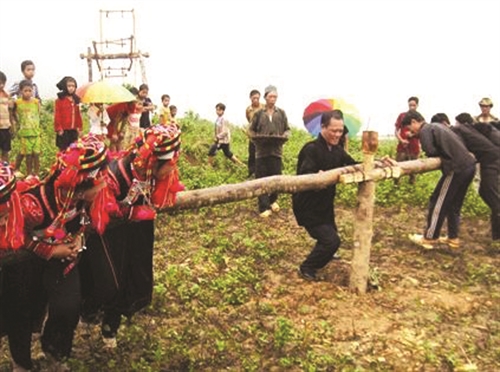 |
| Seesaw is an indispensable game in pray for rain festival__Photo: Internet |
Khu te cha consists of three main parts. The first is the community ritual conducted in the morning on the ground where du lang, du quay, bap benh quay and bap benh are placed. Offerings of the ritual include rice, meat, an egg, wine, tea, silver bracelets, money, white cloth and some wild flowers. The ritual conductor recites prayers, asking for gods’ support for good weather as well as peace and prosperity for the village. He also prays for safety for players of folk games in the festival.
The praying ritual is followed by games. Du lang, a game reflecting harmony between human and nature, is particularly for couples in love. Du quay, which symbolizes the La Hu’s desire for bumper crops, is favored by young men. Bap benh and bap benh quay are for both boys and girls who are usually divided into two teams for competition. Other games include stilt walking and top spinning played by both children and adults. While young people are playing games, a group of villagers make a feast from the food and money contributed by families. At noon, villagers and guests from other villages have the party together.
The second part of the festival is a ceremony dedicated to ancestors held at every home in the afternoon. This ceremony is attended by family members of three generations. The offerings are pork or chicken, rice, wine, tea, sugarcane, banana and cockscomb flowers. Standing in front of the tray of offerings placed at the head of his bed, the family owner prays:
Ancestors,
Your descendants offer you
A bowl of rice,
A bowl of meat,
A cup of ginger liquid,
A cup of wine,
A cup of tea,
Please have them.
We pray for your support
To have good health,
To do good trade,
To raise animals well…
Family members then have the offerings together in the belief they will get good luck granted by their ancestors. This occasion gives family members a chance to gather and tighten their kinship.
The festival is closed at night by the performance of xoe, a traditional dance of ethnic people in the northwestern region. Young people dance gracefully around a big fire to the beats of drum and gong and cheers of villagers.-
